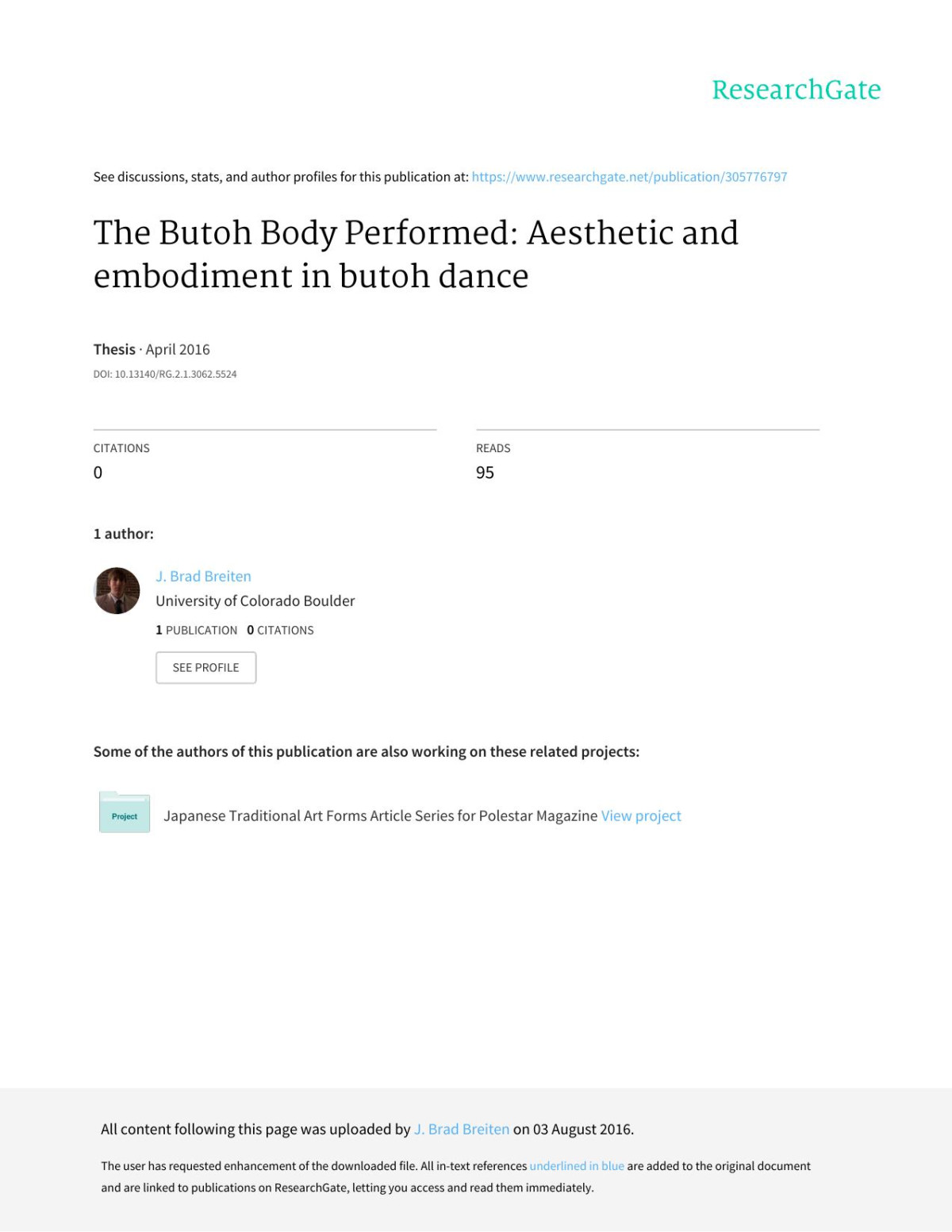

Most ebook files are in PDF format, so you can easily read them using various software such as Foxit Reader or directly on the Google Chrome browser.
Some ebook files are released by publishers in other formats such as .awz, .mobi, .epub, .fb2, etc. You may need to install specific software to read these formats on mobile/PC, such as Calibre.
Please read the tutorial at this link: https://ebookbell.com/faq
We offer FREE conversion to the popular formats you request; however, this may take some time. Therefore, right after payment, please email us, and we will try to provide the service as quickly as possible.
For some exceptional file formats or broken links (if any), please refrain from opening any disputes. Instead, email us first, and we will try to assist within a maximum of 6 hours.
EbookBell Team

5.0
30 reviewsABSTRACT
The Butoh Body Performed: Aesthetic and embodiment in butoh dance
Written by J. Brad Breiten (M.A., Department of Asian Languages and Civilizations)
Supervised by Dr. Janice Brown
The Japanese dance style of butoh provides a rich co-mingling of traditional
Japanese dance movements with a new cultural and artistic expression developed in
the post-war avant-garde period. The focus of this project will be an analysis of the
intersection of this post-war aesthetic with theories of dance and movement in
butoh in order to more fully understand the role of the dancer as a vessel for
embodying meaning in performance and the role of the body in butoh dance to
communicate cultural and emotional meaning. By examining the writings of butoh
originators, this project explores the various elements of an original butoh aesthetic
and examines that performance aesthetic in its relation to forging an emotional
connection with its audience. By drawing on concepts and approaches from the
fields of kinesics and phenomenology, this project explains the human capacity to
embody meaning, how this is achieved, and how that relates to the communicative
goals of butoh performance as laid out by originators of the dance. The project
concludes by examining the intersection of aesthetic ideals with theories of human
movement and embodiment in an analysis of the recent performance Earth Tomes:
celebrating the earth.